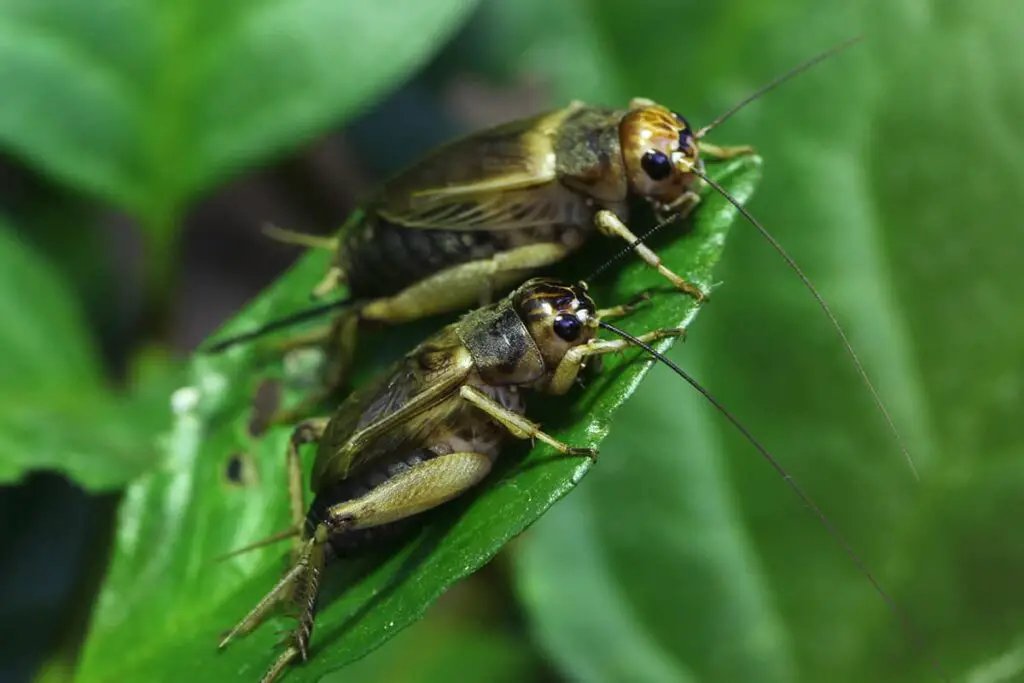
Maintaining the health of crickets can be crucial, especially if you’re keeping them as feeders for your pets or as part of a science project. The temperature of their environment plays a significant role in their wellbeing. Your crickets need to be kept at an ideal temperature range that mimics their natural habitat to ensure they stay active and live longer.
Just like humans, crickets have a preference for where they feel most comfortable and will thrive. Keeping your crickets in conditions that are too cold can slow down their metabolism, potentially impacting their health and making them less nutritious as feed. On the other hand, a habitat that’s too hot can have detrimental effects, too. Managing the correct temperature not only affects their health but also their growth and reproduction rates.
Understanding Cricket Biology
When caring for crickets, it’s crucial for you to understand how their biology dictates their health and behavior in response to temperature. Both their metabolic rate and lifecycle are deeply influenced by the surrounding climate.
Metabolic Rate and Temperature
Your crickets’ metabolic rate is significantly affected by temperature. At an optimal temperature range of 75°F to 90°F (24°C to 32°C), crickets have an active metabolism which is necessary for healthy growth, feeding, and reproduction. Outside of this range, their metabolic functions slow down, and they become less active. Temperature influences various processes, including digestion and movement, underlining the need for a controlled environment. A study explains that the ideal temperature for all cricket activities is between 82-86°F.
Lifecycle Stages
Throughout their lifecycle, crickets go through several stages, starting as eggs and developing into nymphs before reaching adulthood. At room temperatures of 72-76°F, these stages can progress naturally, albeit at a slower pace. Adult crickets have distinct care requirements compared to nymphs, and understanding these differences is key for their survival and health. For example, proper temperature control can ensure a reliable reproduction cycle and successful maturing of young crickets. Keep in mind that crickets are ectotherms; their body temperature adjusts to match their environment, making the control of ambient temperature all the more vital for their development.
Optimal Temperature Ranges
Maintaining the proper temperature is crucial for the health and well-being of your crickets. Specific temperature ranges support their growth and reproduction, ensuring they thrive.
Temperature for Growth
For the common house cricket (Acheta domesticus), the growth phase is best supported by temperatures ranging from 75°F to 90°F (24°C to 32°C). Within this temperature bracket, your crickets will remain active, consume food efficiently, and grow at a healthy pace.
Temperature for Reproduction
When it comes to reproduction, it is ideal to keep your crickets within a similar temperature range as growth. Maintaining the environment between 80°F and 90°F (27°C to 32°C) is optimal for promoting regular breeding activity and ensuring a steady cricket population for your needs.
Maintaining Ideal Conditions
Creating the right environment for your crickets is crucial for their health and well-being. Ensuring proper temperature in your cricket habitat involves both reliable heating solutions and diligent temperature monitoring.
Heating Solutions
To keep crickets at their ideal temperature range of 75°F to 90°F, using a heat lamp or heating pad can be effective. You should:
- Heat lamps: These should be positioned above the cricket enclosure to provide a continuous warmth source. Ensuring that there’s no direct contact with the enclosure is vital to prevent overheating.
- Heating pads: Placing heating pads underneath the tank can provide a stable temperature. However, make sure there is a barrier between the pad and enclosure to distribute heat evenly and avoid hot spots.
Temperature Monitoring
Regularly checking the temperature within your cricket habitat is essential to maintain their health. You might use:
- Thermometers: It’s advisable to place at least one thermometer inside the habitat to accurately gauge the temperature. Consider digital thermometers for more precise readings.
- Thermostats: Connecting a thermostat to your heating source can help in maintaining a consistent temperature, as it will automatically adjust the heat output as needed.
By using these tools and methods, you can maintain a stable and healthy environment for your crickets to thrive.
Frequently Asked Questions
In this section, you’ll find the answers to common questions about maintaining the ideal conditions for your crickets. These pointers will help you ensure a healthy environment for them year-round.
How can I ensure a proper temperature for crickets during winter?
To maintain a warm environment for your crickets during the colder months, you can use a space heater, heat lamp, or heat pad. Be careful to monitor the temperature closely to avoid overheating.
What are the ideal conditions to keep crickets alive?
Crickets thrive in temperatures between 75°F and 90°F with moderate humidity levels. Ensure that their habitat is well-ventilated to prevent the buildup of harmful ammonia.
What should I avoid feeding my crickets for their health?
Avoid giving your crickets meat, dairy, and high-fat foods, as these can harm their health. A mix of fruits, vegetables, and grains is more suitable for their digestive systems.
What is the right diet to gut load crickets effectively?
To gut load crickets effectively, feed them a mix of nutritious fruits, vegetables, and a supplement that you give to your reptile, ensuring they are nutrient-rich for their predators.
How can I provide water to crickets without risking their health?
Instead of directly spraying water, which can spread diseases, provide moisture with a wet sponge or paper towel in their enclosure, which crickets can drink from safely.
What are the signs that the environment is too hot for crickets?
Signs of an overly hot environment include lethargy, reduced chirping, and in severe cases, an increase in cricket mortality. If you notice these symptoms, immediately lower the temperature and improve ventilation.
Driven by a passion for those tiny creatures that rule our world, we at Bug Domain strive to be your go-to resource for information on insects.




